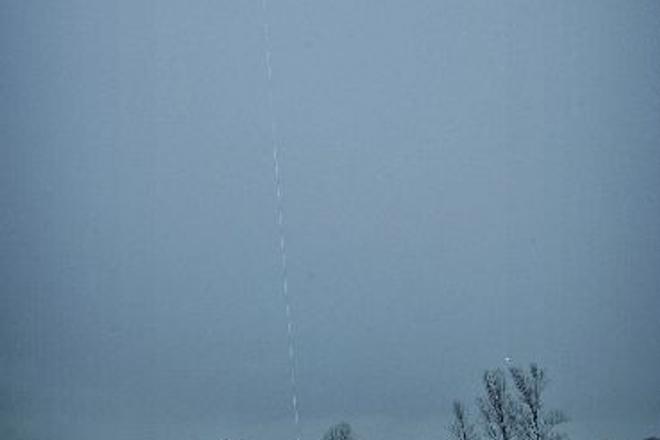TRACKING devices, mini HD cameras, bryndzové halušky and an issue of the Sme daily are some of things participants in a Slovak engineering project placed into their special STS-2 module, which they sent up into the stratosphere on January 15. The purpose of this project, called “Sme v stratosphere” and run by a group of radio amateurs and the Sme daily, was to take unique shots of Slovakia and space and send them back to Earth. The project is intended to propagate science and the work of young engineers as well as to educate the public about why the stratosphere is important for our planet.
“It can all be done without significant support from the state and its institutions,” Tomáš Prokopčák wrote in a commentary for Sme. “You do not need any national or European funds and grants as well as related percents [i.e. bribes] for bureaucratic blackmailers.”
Preparation was no easy task since the flight into the stratosphere was actually an experiment in itself. The engineers, who built some of the electronic parts themselves, initially encountered problems sourcing the helium needed to fill the meteorological balloon that carries the module, but were eventually able to obtain it, Sme reported.
“We are happy that we will have the chance to touch [space],” chief engineer Radim Mutina, told Sme the day before the launch. “This is not just a simple project, as few people get to develop and test their own devices during an actual flight.”
The balloon took off at 8:00 from Považany, a village in western Slovakia and, without complications, sent the first photos of the stratosphere at 8:59. The bryndzové halušky had frozen 11 minutes earlier. The first technical problems occurred at 9:21 after the team stopped receiving a signal from one of two trackers installed in the module. If the second tracker had stopped working, the team would have lost the balloon.
Around 9:53 the balloon exploded after reaching a maximum altitude of 38,003 metres. At 1,900 metres engineers lost the signal, yet they predicted that the module would fall somewhere near Hovězí, a Czech village close to the Slovak border. After arriving in the area, they picked up the signal again, which helped them to locate the module among a housing construction site in Huslenky, a village not far from Hovězí, at 11:22.
The stratosphere is one of the outer layers of the earth’s atmosphere. It lies above the troposphere, and begins at around 10 kilometres above the earth. The lowest layer of the stratosphere can be reached during an aeroplane flight. The stratosphere protects the planet against water loss, and the ozone layer, most of which exists in the stratosphere, protects the planet from the sun’s harmful ultraviolet rays, Sme wrote.



 Wehave liftoff! (source: SME)
Wehave liftoff! (source: SME)